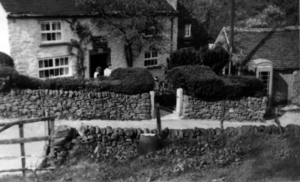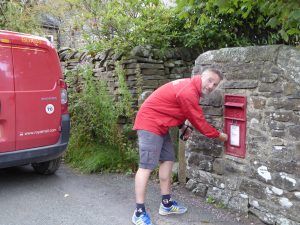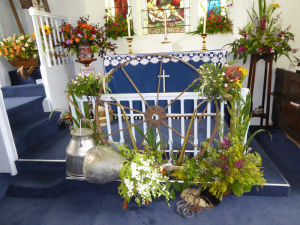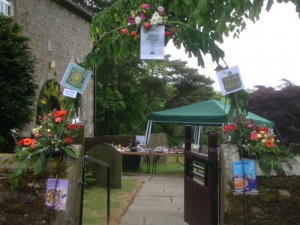About
Elkstones is a tiny village in the Staffordshire Moorlands, close to the Derbyshire border and within the Peak District National Park. Made up of two parts – Upper and Lower Elkstone – it is particularly beautiful and unspoilt, positioned on the hillside below Morridge and affording lovely views for most of its residents. There are only twenty houses in the nucleus of the village but there are at least as many outlying farms which come within the village boundaries. We are small but like to think we’re perfectly formed!
The only remaining public building in the village is St John’s Church – a Georgian Grade 2* listed building with painted pews, a gallery and an Edward Byrne Jones window commissioned as a war memorial.
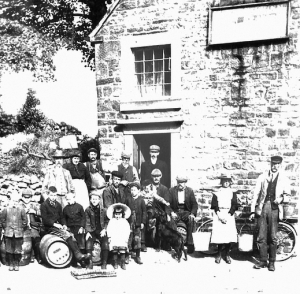
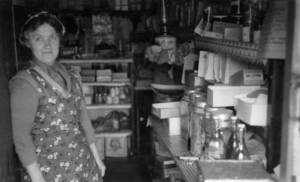
The school closed in 1970 and has now been converted into a dwelling that still retains the old bell tower. The last village shop (now Hob Hay Cottage) which sold, apparently, “more than could be found in Woolworths” also ceased trading in the 1970s while the Cock Inn closed in 1976 as a result of a military vehicle failing to make the second part of the hairpin bend in the centre of Upper Elkstone.
Some unfortunate walkers with old OS maps still arrive in the village only to find that a lunchtime beer is off the menu. Numerous photographs can be found here and colourful accounts of village life are detailed in the Elkstones’ books.
Today we are aware that as a community we have to “make our own fun” and this we do with a range of events throughout the year.
These include church festivals, most particularly the carol service, harvest festival and auction and the wakes service where entertainment is courtesy of Ashbourne Town Band.
Each year a flower festival is the main fundraiser to maintain our little church which is the hub of the community. In addition to church activities there is an Elkstonians’ Society which offers a variety of social events and a women’s group which seeks to interest our female population through a diverse range of pursuits aimed at keeping the village buoyant during these difficult times for rural communities.
